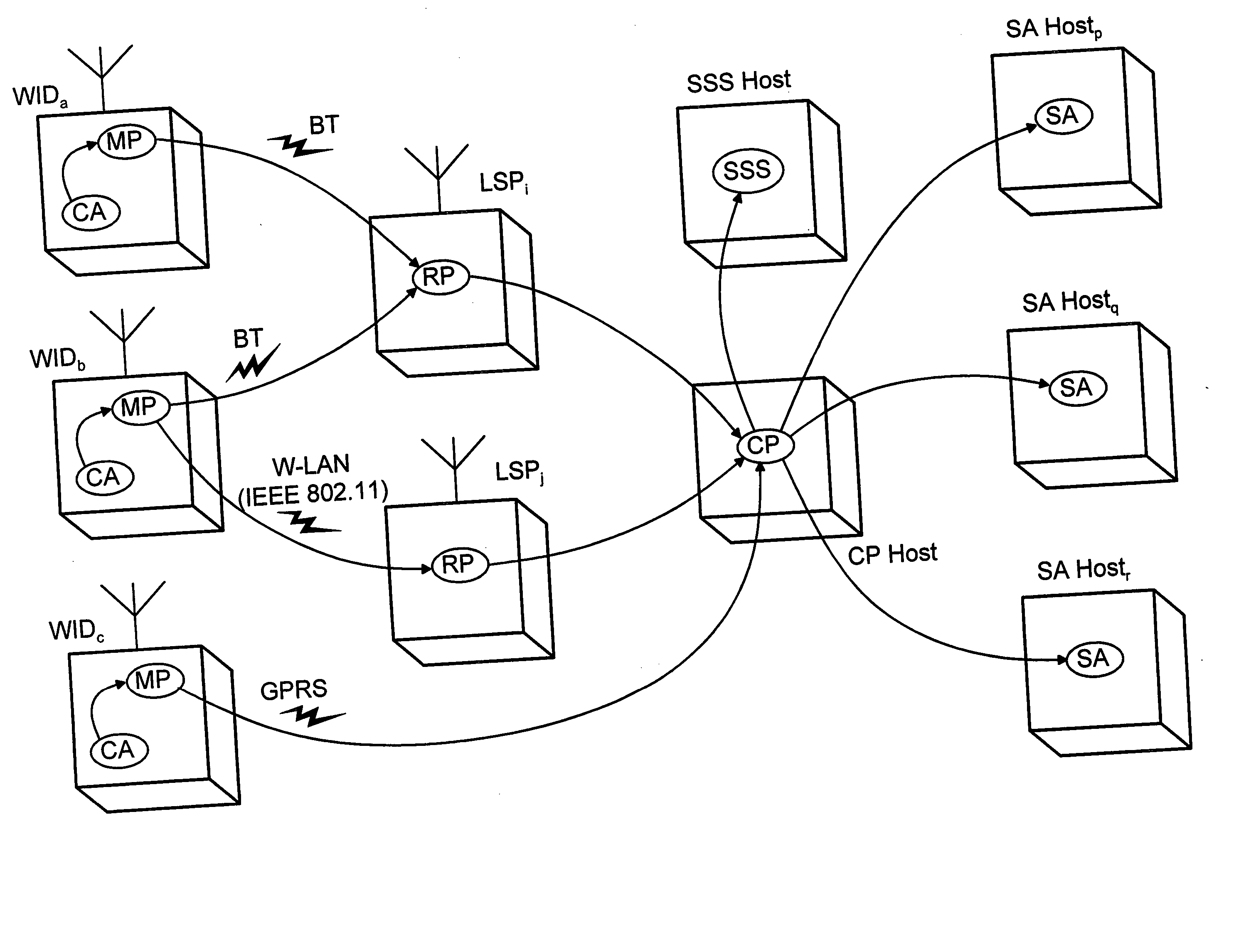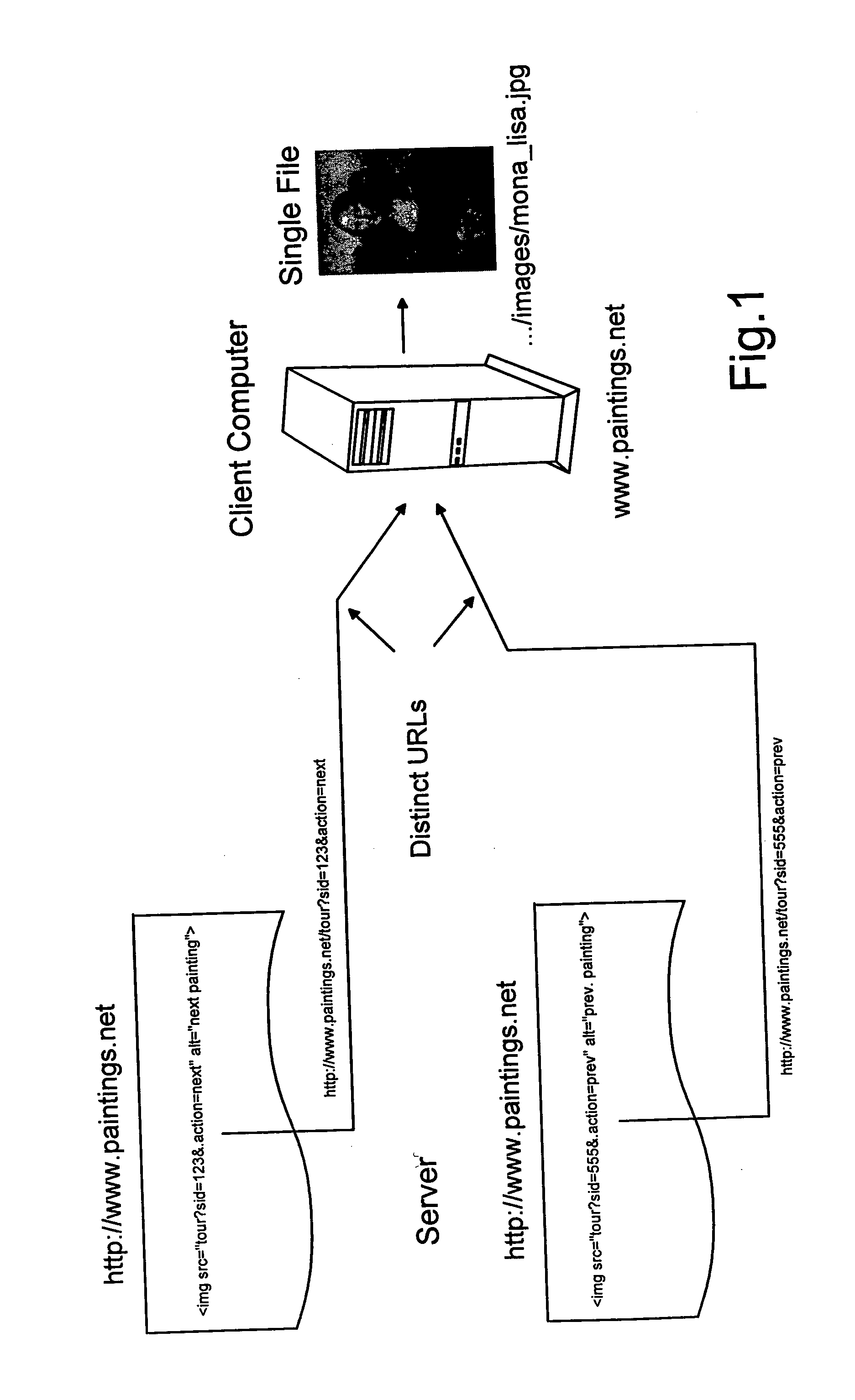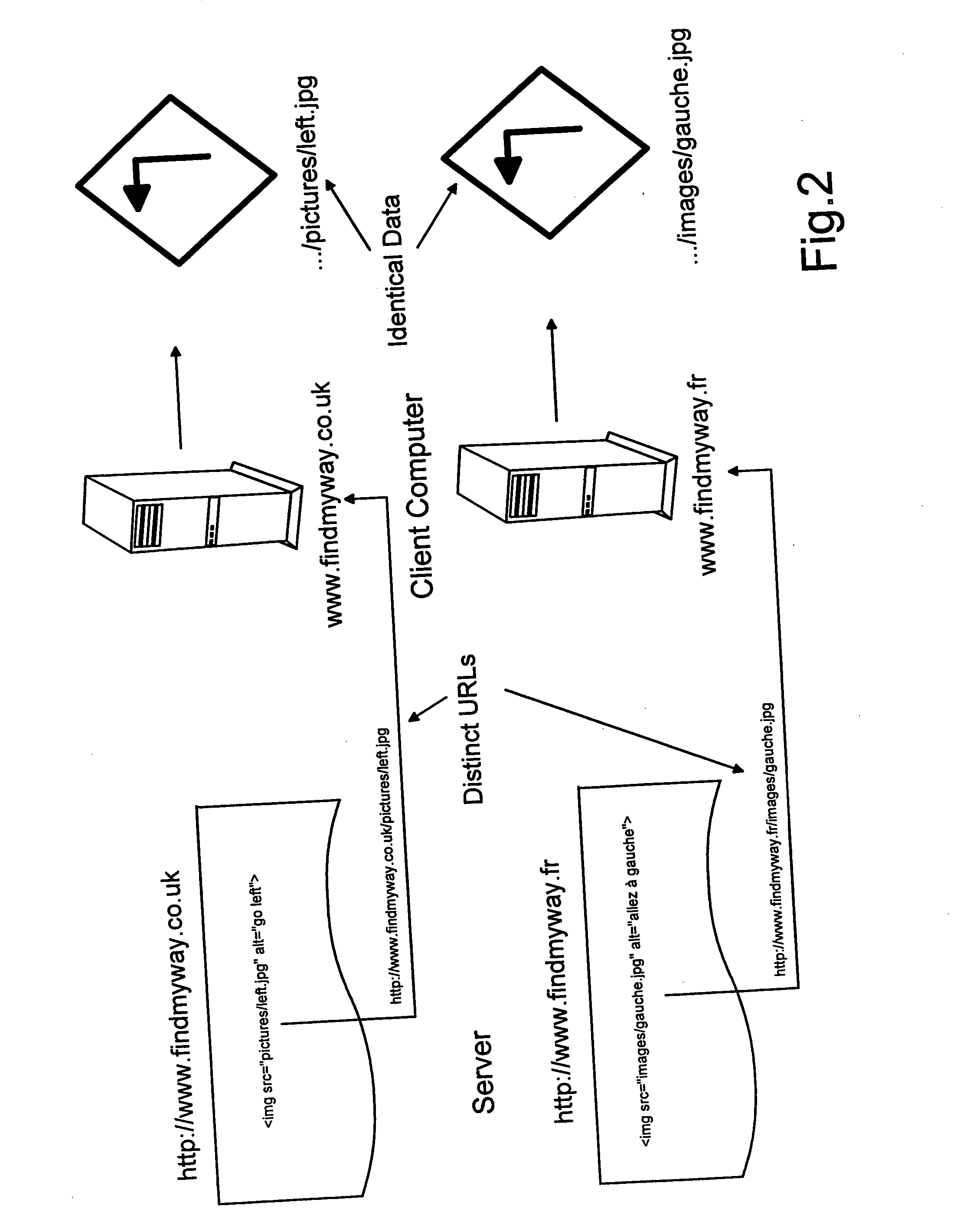Method for reducing data transport volume in data networks
a data network and data technology, applied in the field of data network data transport volume reduction, can solve the problems of data being considered invalid, old results no longer valid, copying becomes stale with negative effect on use, etc., and achieves the effects of reducing communication capacity, saving time and money, and significantly increasing latency
- Summary
- Abstract
- Description
- Claims
- Application Information
AI Technical Summary
Benefits of technology
Problems solved by technology
Method used
Image
Examples
Embodiment Construction
[0032] Referring now to FIG. 3 there is illustrated an example of the architecture of three wireless information devices WIDa, WIDb and WIDc each containing in the corresponding device configuration a client application CA and a mobile proxy MP. The client wireless information devices WIDa, WIDb and WIDc may be mobile telephones, PDAs or laptops, for example, all wireless linked. In this arrangement the mobile proxy MP of the first client information device WIDa communicates via a Bluetooth short range wireless link BT with a resident proxy RP of a local service point LSPi.
[0033] The mobile proxy MP of the second client information device WIDb communicates via a Bluetooth short range wireless link BT with the resident proxy RP of the local service point LSPi and via a W-LAN wireless link in accordance with IEEE 802.11 with the resident proxy RP of a second local service point LSPj.
[0034] The third client information device WIDc with its mobile proxy MP does not reach a local servi...
PUM
 Login to View More
Login to View More Abstract
Description
Claims
Application Information
 Login to View More
Login to View More - R&D
- Intellectual Property
- Life Sciences
- Materials
- Tech Scout
- Unparalleled Data Quality
- Higher Quality Content
- 60% Fewer Hallucinations
Browse by: Latest US Patents, China's latest patents, Technical Efficacy Thesaurus, Application Domain, Technology Topic, Popular Technical Reports.
© 2025 PatSnap. All rights reserved.Legal|Privacy policy|Modern Slavery Act Transparency Statement|Sitemap|About US| Contact US: help@patsnap.com



